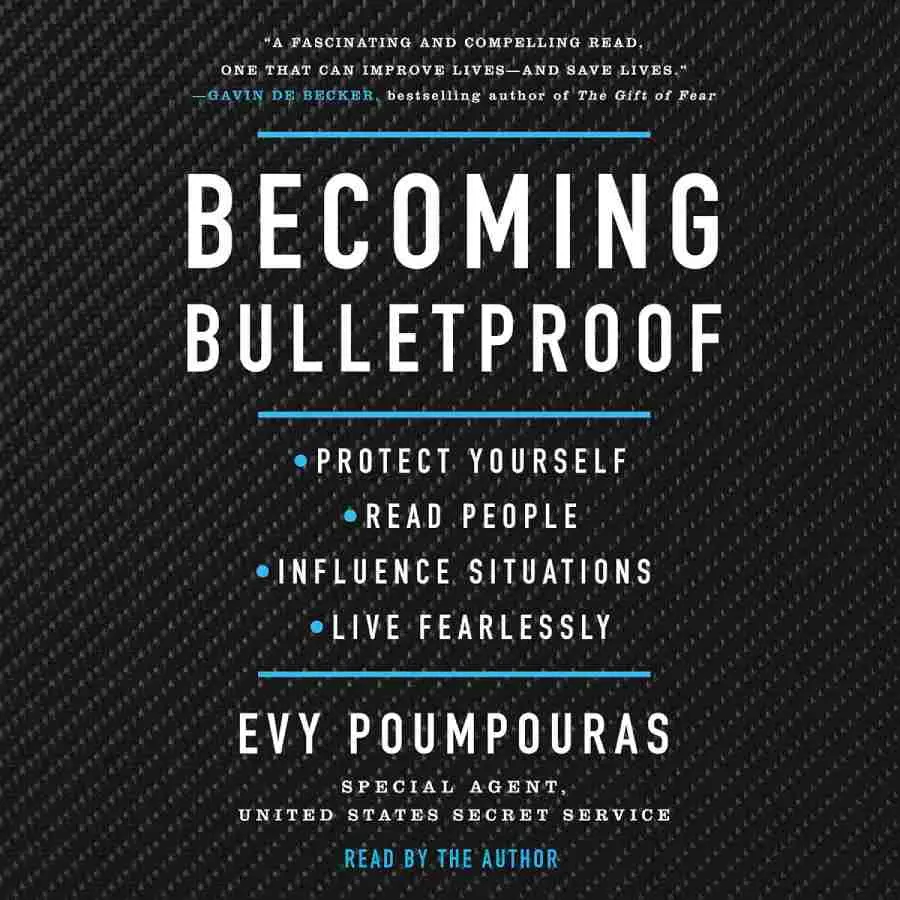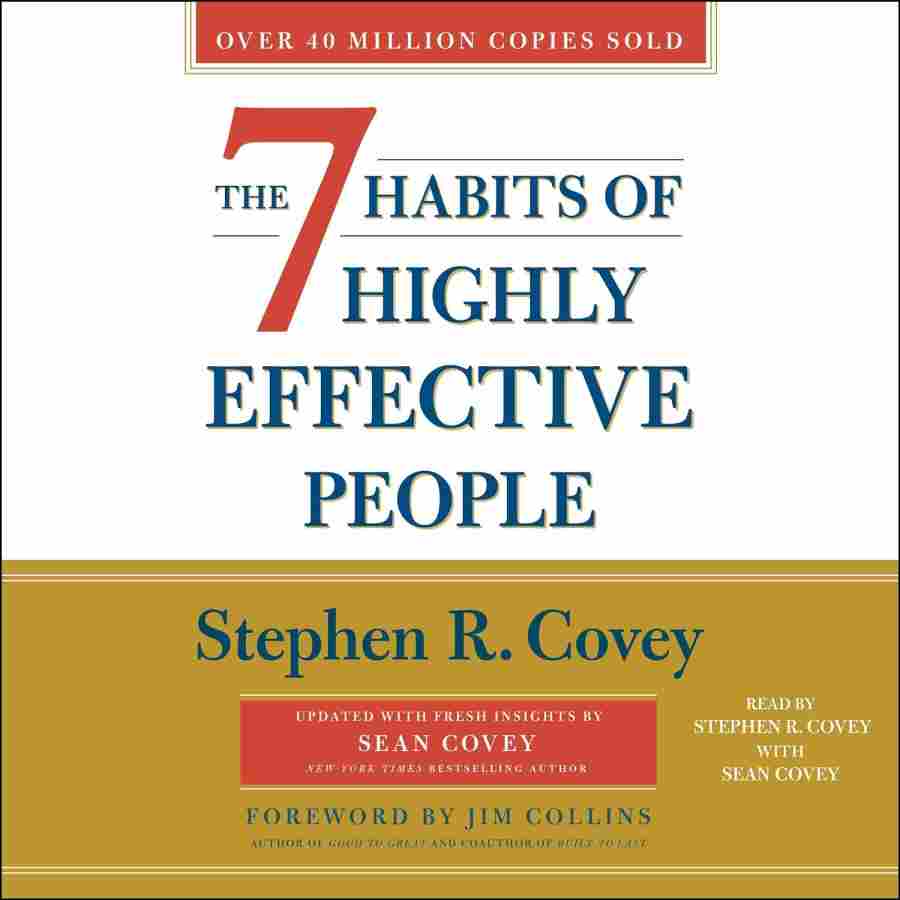

I discovered “Becoming Bulletproof” by Evy Poumpouras during one of my periodic searches for new books. This title piqued my interest since I like self-improvement books and have a minor fixation with understanding the human psychology. It offered not just self-defense advice, but also insights about reading people and influencing events, both of which I find endlessly intriguing. As someone who has read innumerable self-help and psychological books, I was curious to see how this one held up, particularly against other favorites such as Malcolm Gladwell’s “Blink” and Gavin de Becker’s “The Gift of Fear.” So, let’s get started with this in-depth review, which includes a few spoilers for those who like knowing the specifics ahead of time.
Overview:
Evy Poumpouras, a former Secret Service agent, contributes her significant knowledge in protection and security to this book. Poumpouras’ credentials are immaculate, as she has safeguarded US presidents and received the Medal of Valor for her conduct during the 9/11 attacks. This book, however, is about more than simply her experiences in the Secret Service. It’s a comprehensive guide to developing mental resilience, trusting your intuition, and navigating life’s unanticipated situations with confidence.
Structure and Content
“Becoming Bulletproof” is structured into three major sections: Protection, Reading People, and Influence. Each segment is intended to transmit practical skills that can be used in daily life, so the book is more than simply a memoir or a collection of tales.
Protection
In this segment, Poumpouras emphasizes personal safety and mental strength. She gives tips for being safe in a variety of scenarios, such as going home at night or traveling in a strange place. Her focus on situational awareness—being aware of your surroundings and possible hazards at all times—is one of her most notable pieces of advise. She also digs into the psychological component of safety, describing how to educate your mind to stay cool and collected amid emergencies.
Poumpouras emphasizes the necessity of cultivating a mentality that values safety and readiness. This includes practical efforts like preparing escape routes, comprehending the structure of new locations, and being aware for possible hazards. She offers instances from her own life, such as high-pressure circumstances in the Secret Service, to demonstrate how these ideas may be used in daily life.
Furthermore, she emphasizes the significance of physical fitness and training. Maintaining a high level of physical fitness not only helps in self-defense situations, but it also increases confidence and mental resilience. Poumpouras explains fundamental self-defense methods and urges readers to exercise regularly to improve their abilities and confidence.
Reading People
Poumpouras’ ability to read people was refined throughout years of questioning and security detail. This part teaches readers how to evaluate body language, spot dishonesty, and grasp others’ underlying intentions. The strategies are practical and anchored in real-life events, making them accessible to persons with no prior experience in psychology. She teaches how to identify falsehoods by studying contradictions between verbal and nonverbal communication, a skill similar to what I acquired from Paul Ekman’s work on microexpressions.
Understanding body language requires paying attention to minute clues including microexpressions, posture, and gestures. Poumpouras highlights the necessity of knowing a person’s baseline behavior so that departures from it may be identified more readily. For example, she notes that crossed arms may signal defensiveness or discomfort, but only if it differs from the person’s typical easy manner.
Poumpouras also digs into the psychology of dishonesty, demonstrating how to discern when someone is lying. She outlines frequent indicators of deception, such as avoiding eye contact, fidgeting, and contradictions in their statement. Understanding these signals allows readers to better navigate social situations and protect themselves from manipulation and deception.
Influence
The book’s last portion discusses how to influence conditions and people to obtain desired results. Poumpouras highlights the significance of communication skills, empathy, and trust. She explains how to negotiate successfully and lead with power without resorting to intimidation. This section of the book is extremely powerful, since it provides readers with skills for asserting themselves and navigating difficult social interactions.
Understanding the other person’s point of view and developing rapport are essential components of effective communication. Poumpouras teaches skills for active listening, utilizing body language to express openness and trustworthiness, and structuring talks for good results. She uses instances from her own experience to demonstrate how important it was to create trust and rapport as a Secret Service agent.
Another major concentration is on negotiation abilities. Poumpouras offers practical guidance on how to negotiate with confidence and clarity. She emphasizes the significance of preparation, knowing the other party’s objectives, and identifying common ground. By learning these abilities, readers may influence results in their favor, whether in professional or personal interactions.
Key Takeaways and Lessons
- Mental Resilience: One of the book’s key teachings is that genuine strength comes from mental resilience. Poumpouras uses examples from her service in the Secret Service to show how staying calm under pressure may be the difference between life and death.
- Situational Awareness: Understanding your surroundings and being able to predict possible risks is an important skill. Poumpouras teaches readers how to increase situational awareness and trust their intuition.
- Interpersonal Skills: From reading body language to persuading others, the book offers a full arsenal for developing interpersonal relationships. This isn’t only about identifying falsehoods; it’s also about understanding and influencing people.
- Preparation and Training: The value of preparation cannot be emphasized. Poumpouras emphasizes that being prepared, whether via physical training for self-defense or mental exercises to increase attention and serenity, is essential for being bulletproof.
Spoilers and Notable Moments
Poumpouras sprinkles the book with fascinating tales from her career, providing a behind-the-scenes peek at life in the Secret Service. One very compelling story concerns her activities during the 9/11 attacks. In her book, she emphasizes the need of mental toughness and training in dealing with turmoil. She describes how she remained calm and carried out her tasks despite the pandemonium.
Another interesting incident is her interactions with numerous presidents and dignitaries. These anecdotes provide curiosity while also demonstrating the themes she outlines. For example, her encounter with a foreign dignitary who attempted to circumvent security regulations emphasizes the need of standing strong and following established processes, regardless of who is questioning them.
In a particularly moving passage, Poumpouras relates an occasion in which she had to safeguard a prominent figure in a dangerous position. The strain was intense, yet she was able to ease the situation with calm negotiating and smart thinking. This anecdote not only demonstrates her abilities, but it also serves as a compelling illustration of the values she teaches throughout the book.
Comparisons with Similar Books
Reading “Becoming Bulletproof” made me think of Gavin de Becker’s “The Gift of Fear,” which promotes following one’s instincts to be safe. However, Poumpouras’ work is larger in scope, addressing not just fear and safety but also influence and communication. Similarly, Malcolm Gladwell’s “Blink” delves at the potential of fast cognition, which echoes Poumpouras’ lessons on reading people quickly and correctly.
While “The Gift of Fear” emphasizes the role of intuition in detecting and avoiding danger, “Becoming Bulletproof” takes a broader approach to personal protection and empowerment. Poumpouras’ insights on influence and communication distinguish her book, making it an invaluable resource for anybody wishing to boost their overall resilience and effectiveness in a variety of areas of life.
Another parallel may be seen to Dale Carnegie’s book “How to Win Friends and Influence People.” Both books highlight the value of interpersonal skills and good communication. However, Poumpouras’ expertise in security, as well as her emphasis on mental resilience and situational awareness, give a distinct layer to her book, making it a well-rounded guide to personal empowerment.
Personal Reflections
As I read “Becoming Bulletproof,” I found myself thinking about how its concepts may be implemented in my own life. The focus on mental resilience resonated strongly with me, especially in today’s fast-paced, frequently stressful society. Poumpouras’ advise on keeping calm and preparing for the unexpected is applicable to both professional and personal situations.
Her talents into reading people and analyzing body language were equally noteworthy. In a world where digital communication sometimes lacks the delicacy of face-to-face conversations, the ability to detect subtle indications and grasp underlying motivations is a valuable talent. This portion of the book has already changed the way I approach discussions and understand the conduct of others around me.
The last segment on persuasion and bargaining was really informative. Poumpouras’ practical advice on how to create rapport and negotiate successfully is something I’ve begun applying into my everyday dealings. Her focus on empathy and understanding the other person’s point of view has been useful in both professional and personal contexts.
Conclusion
“Becoming Bulletproof” is a compelling and intelligent book that goes beyond basic self-defense. It is a guide to mental and emotional empowerment, teaching readers how to confront life’s obstacles with confidence and composure. Poumpouras’ combination of personal experiences, practical guidance, and psychological insights makes this book an excellent addition to anyone’s library, especially those interested in self-improvement and personal safety.
For anybody wishing to improve their resilience, interpersonal skills, and capacity to influence events.

